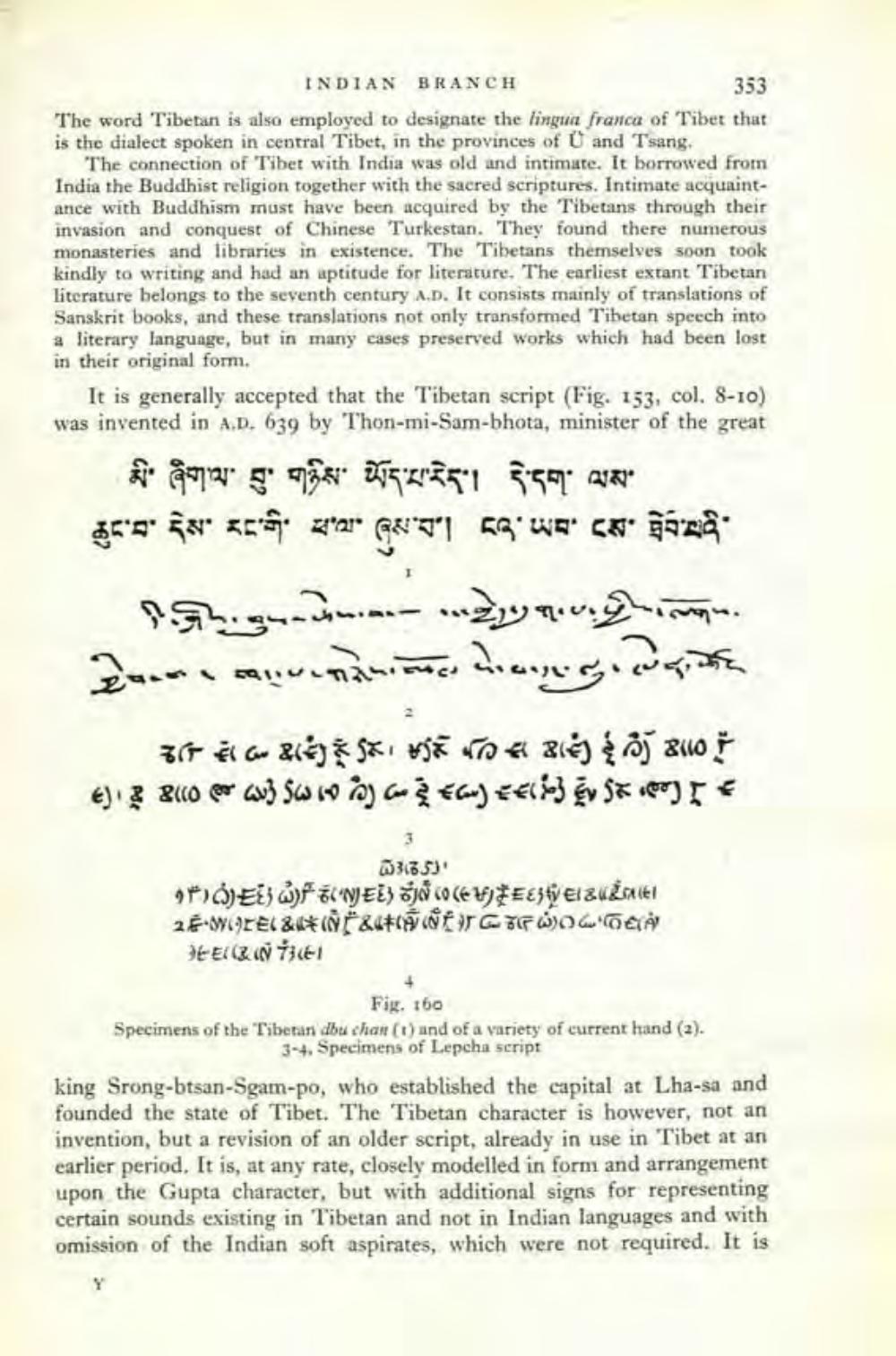________________
INDIAN BRANCH
353 The word Tibetan is also employed to designate the lingua franca of Tibet that is the dialect spoken in central Tibet, in the provinces of U and Tsang.
The connection of Tibet with India was old and intimate. It borrowed from India the Buddhist religion together with the sacred scriptures. Intimate acquaintance with Buddhism must have been acquired by the Tibetans through their invasion and conquest of Chinese Turkestan. They found there numerous monasteries and libraries in existence. The Tibetans themselves soon took kindly to writing and had an aptitude for literature. The earliest extant Tibetan literature belongs to the seventh century A.D. It consists mainly of translations of Sanskrit books, and these translations not only transformed Tibetan speech into a literary language, but in many cases preserved works which had been lost itn their original form,
It is generally accepted that the Tibetan script (Fig. 153, col. 8-1o》 was invented in A,p, 639 by 'Thon-mi-Sam-bhota, minister of the great
མི་ ཞིག་ལ་ བུ་ གཉིས་ ཡོད་པ་རེད་། དེ་དག་ ལས་ ཆུང་བ་ དེས་ རང་གི་ ཕ་ལ་ ཞུས་བ་། ངའ་ཡབ་ ངས་ ཐེབ་པའི་
དེ་སྦྱོག་གུས་པས་མ་ལ ་་་སྦྱོད་དུག་པ་ཁྱིས་འདས་ གྱེས་ཕ ་ ། གད་པ་གངོས་མ་ སྡེ་མ་དང་༦་མན་ཧོ་
T
ཟr i«=R¢y×$c v$x «p« z¢y { ô)go ༦)ąR«oe »》$»༦v2y = → ཝy <<༨} $x e*J© <
03%6$3*
ཉ°»»E{5ཨཽf°6«JEy#jཨཽ ༠€jFE£5VEL&@Žt€I aF•}EE&I¥ N&«+tąNË)F C o yO'6Êt(༼ 3ÊERN731
Fig, tfie
Speecimens of the 'Tibetarn dbu ciat (t) und of a variety of current hund (2). 3-4, Specimerns of Lepcha script
king Srong-btsan-Sgam-po, who established the capital at Lha-sa and founded the state of Tibet. The Tibetan character is however, not an invention, but a revision of an older script, already in use in Tibet at an earlier period. It is, at any rate, closely modelled in form and arrangement upon the Gupta character, but with additional signs for representing certain sounds existing in Tibetan and not in Indian languages and with omission of the Indian soft aspirates, which were not required. It is




